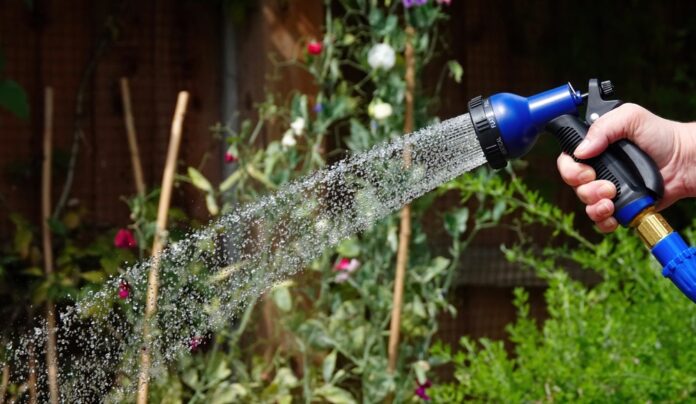As the sun blazes and temperatures soar, gardeners often face the daunting challenge of keeping their gardens flourishing. Extreme heat can stress plants, halt growth, and even lead to wilting and death. However, with the right strategies, you can ensure your garden not only survives but thrives during the hottest months. Here’s how to beat the heat and keep your garden lush and productive all summer long.
Understanding the Impact of Extreme Heat on Your Garden
When temperatures climb above 86°F, many plants begin to experience stress. High heat can slow down photosynthesis while increasing respiration, leading to a depletion of the plant’s energy reserves. Prolonged exposure to such conditions can cause plants to wilt, cease growth, and eventually perish.
Moreover, excessive heat accelerates water loss through transpiration, making it crucial to maintain adequate soil moisture. Recognizing these challenges is the first step toward implementing effective solutions.
Water Wisely: The Foundation of Plant Health
Watering is perhaps the most critical aspect of gardening during hot weather. To keep your plants hydrated and healthy:
- Water Deeply and Infrequently: Encourage deep root growth by watering plants long and slow. This method allows roots to access moisture deeper in the soil, making them more resilient to heat.
- Optimal Timing: Water your garden early in the morning or in the evening when temperatures are cooler. This practice minimizes evaporation and ensures that plants are well-hydrated before the peak heat of the day.
- Efficient Methods: Utilize drip irrigation or soaker hoses to deliver water directly to the plant roots, reducing water waste and keeping foliage dry to prevent leaf scorch.
Mulching: Shield Your Soil
Mulching is an effective way to conserve soil moisture, regulate temperature, and suppress weeds:
- Choose the Right Mulch: Organic mulches like straw, grass clippings, or shredded leaves are excellent choices. They keep soil temperatures down and retain moisture, creating a favorable environment for root growth.
- Apply Correctly: Spread mulch evenly around plants to a depth of 2-3 inches, being careful not to pile it against plant stems, which can lead to rot.
Provide Shade Where Necessary
Some plants, especially cool-season crops and young transplants, benefit from additional shading during intense heat:
- Use Shade Cloths: Installing shade cloths can reduce sunlight intensity and keep the soil cooler. Shade cloths are affordable and can be easily draped over plants.
- Strategic Planting: Plant taller, sun-loving species to provide natural shade for more delicate plants underneath. This interplanting technique not only shades the soil but also maximizes garden space.
Select Heat-Tolerant Varieties
Choosing the right plants is crucial for a successful summer garden:
- Opt for Heat-Loving Plants: Include varieties known to thrive in high temperatures, such as okra, eggplant, sweet potatoes, and certain peppers. These plants are better equipped to handle the stress of extreme heat.
- Local Varieties: Consider selecting vegetable varieties adapted to hot climates. Local nurseries often carry plants that perform well in your specific conditions.
Soil Management: Boosting Plant Resilience
Healthy soil is the foundation of a thriving garden:
- Incorporate Organic Matter: Adding compost or aged manure improves soil structure, enhances moisture retention, and provides essential nutrients.
- Regular Fertilization: Heat-stressed plants can benefit from a nutrient boost. Use a balanced fertilizer to maintain soil quality and enhance plant resilience.
Mind Your Garden Layout
The way you design your garden can impact its ability to withstand heat:
- Windbreaks: Install windbreaks using fences or hedges to prevent soil moisture loss and protect plants from drying winds.
- Raised Beds Considerations: Raised beds can dry out quickly in hot weather. Ensure they are well-mulched and consider adding organic matter to improve water retention.
Care for Container Plants
Container gardens need extra attention during hot weather:
- Frequent Watering: Pots can heat up and dry out faster than ground soil. Check moisture levels daily and water container plants twice a day if necessary.
- Shade and Protection: Move containers to shaded areas during the hottest part of the day to protect roots from extreme temperatures.
Starting Seeds and Transplants
Heat can be tough on young plants:
- Seed Germination: For successful germination in hot conditions, start seeds indoors or provide extra moisture and shade.
- Transplanting Tips: Harden off seedlings gradually and transplant during cooler parts of the day. Protect young plants with shade until they establish.
Monitor and Adjust Watering Practices
Regularly check soil moisture levels to avoid under or over-watering:
- Soil Checks: Insert your finger into the soil up to the second knuckle. If it feels dry, it’s time to water.
- Adjust for Weather Conditions: Plants may require more water during hot, windy days.
Additional Tips for Extreme Heat
- Avoid Stressful Activities: Refrain from fertilizing or heavy pruning during heatwaves, as this can add stress to already struggling plants.
- Prompt Harvesting: Harvest fruits and vegetables promptly to reduce the energy demand on plants.
- Use Windbreaks: Creating windbreaks can help reduce stress on plants by minimizing moisture loss.
Personal Care: Don’t Forget About Yourself
Gardening in extreme heat isn’t just tough on plants—it’s tough on gardeners too:
- Stay Hydrated: Drink plenty of water before, during, and after gardening.
- Time Your Gardening: Work during cooler parts of the day, such as early morning or late evening.
- Protect Yourself: Wear sunscreen, a hat, and light-colored, breathable clothing.
Conclusion
Keeping your garden thriving during hot summers is all about proactive care and smart gardening practices. By understanding how extreme heat affects your plants and implementing these strategies, you can enjoy a lush, productive garden all season long. Remember, a little extra effort goes a long way in ensuring your plants not only survive but flourish under the summer sun.
Investing in quality gardening supplies can make these tasks easier. Consider purchasing shade cloths or drip irrigation systems to enhance your garden’s resilience against the heat.
Happy gardening!


